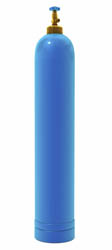Getting oxygen from air for industrial use
Pure oxygen typically obtained by membrane separation from air is a requirement of many industrially relevant processes. The efficiency of the separation process itself is currently limited due to low permeability with thick oxygen transfer membranes (OTMs). Also, no technology is available that produces stable thin OTMs. Scientists initiated the EU funded project 'Nanostructured surface activated ultra-thin oxygen transport membrane' (NASA-OTM) to overcome current limitations. The focus was on targeted energy-related applications – one to reduce emissions from fossil fuel plants and two to convert methane to useful products. Oxyfuel combustion is a process in which fossil fuel is burned in pure oxygen. It produces steam and nearly pure carbon dioxide (CO2), easy to separate for efficient carbon capture and storage (CCS). Oxidative coupling of methane (OCM) and the Andrussow reaction (AR) are used to produce industrially useful chemicals from methane. Scientists investigated two different classes of ceramic materials based on structural differences, perovskites and fluorites. The former have high permeability but limited stability and are suitable for oxyfuel application. The latter have low permeability but high stability for OCM and AR applications. Optimising the porosity of porous supports for ultra-thin perovskite (Ba0.5Sr0.5Co0.8Fe0.2O3-d (BSCF)) membranes minimised diffusion barriers to achieve the highest permeability to date. This is particularly promising for reducing the costs of pure oxygen generation in oxyfuel CCS. Catalytic surface activation in fluorite membranes increased reaction kinetics/surface exchange for very high yield in the OCM reaction. Fluorite membranes were less successful in the AR application due to undesirable by products generated in the catalytic process and require further investigation. Both material classes were successfully applied as ultra-thin films using the magnetron sputtering (MS) technique. Permeability of the film containing a perovskite (La0.58Sr0.4Co0.2Fe0.8O3-d (LSCF)) was limited. However, scientists demonstrated higher permeability with metallic support and fluorite (cerium gadolinium oxide (CGO)) interlayers. The functional nature of this promising architecture warrants additional research. NASA-OTM developed promising ceramic-based OTMs for pure oxygen separation from air. The development and optimisation of complex transport behaviour of these multi-layered membrane assemblies promises considerable CO2 emission reduction in fossil power plants.







